Charting New Experiences: The Anambas Odyssey Continues for the NUS Seafarers
July 25, 2023
IN BRIEF | 15 min read
- As their journey continues in this second instalment of the two-part series, the voyagers learn more about the local industries and explore the urban sights of the archipelago.
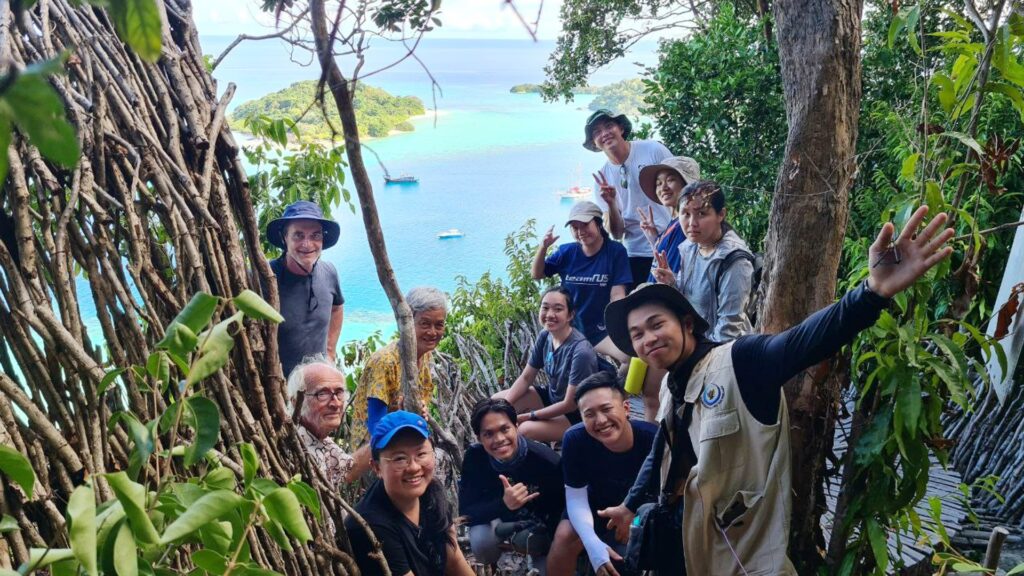
“The fair breeze blew, the white foam flew,
The furrow followed free;
We were the first that ever burst
Into that silent sea.”
– Coleridge, “Rime of the Ancient Mariner”
They may not have been the first to traverse that stretch of ocean, but for many of the students embarking on the 12-day voyage with the NUS Seafarers to Indonesia’s Anambas Islands, the experience of sailing was a first that opened their eyes to the thrill of being out at sea.
Read about the voyagers’ experiences picking up nautical skills, visiting local communities, and exploring the marine biodiversity in Part 1 here.
As their journey continues in this second instalment of the two-part series, NUS News tags along to chronicle the voyagers’ adventures learning about the local industries and exploring the urban sights of the archipelago.
The green economy: Investigating the ecotourism industry
Sailing onwards, the voyagers got a comprehensive view of an increasingly dominant form of economic activity in the region—ecotourism. They visited Bawah Reserve, an eco-island resort located in the southern islands, to learn how ecotourism, a relatively new, up-and-coming niche in tourism, offers a more sustainable alternative to the high levels of consumption associated with luxury tourism.

Receiving a behind-the-scenes tour of the efforts made towards Bawah Reserve’s eco-philosophy, the voyagers were acquainted with features such as lodgings constructed using bamboo and locally sourced natural building materials, a permaculture garden that supplies fruits, crops and herbs to the kitchens, solar panels that keep the island running on a greener source of energy, and a waste management programme predicated on a recycling policy, with the profits going to local communities in Batam. A marine conservation area with coral nurseries also protects the natural habitats of the sea turtles, eagle rays, and blacktip reef sharks that frequent its waters.
By offering nature-based tourist attractions and activities such as hiking, snorkelling, and paddleboarding, the resort not only creates jobs for locals and raises awareness of sustainability issues, but incentivises local populations to become environmental stewards in order to attract tourist dollars, a win-win situation that marries the twin goals of economy and sustainability.
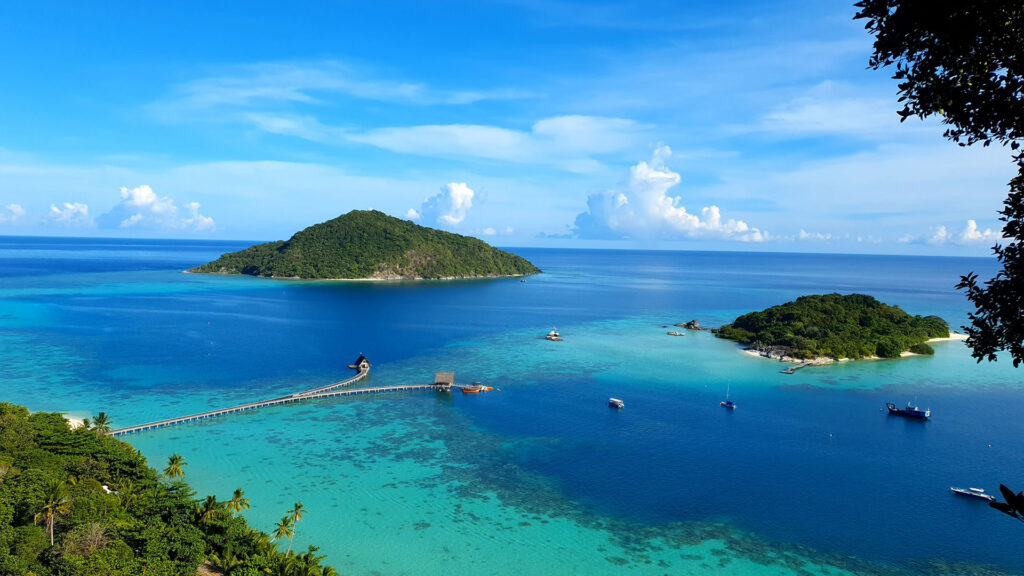
They also had the opportunity to visit an ecotourism establishment at the other end of the spectrum, Ecosymbiosis, in Sagudampur. Run by founder Antje Spors and her daughters, with the help of the Orang Laut people and some local employees, the survival ecotourism concept aims to bring visitors back in harmony with nature, to lead a sustainable, minimalist hunter-gatherer existence integrated seamlessly into the wider ecosystem.

The voyagers experienced the model of zero-trace, non-pollutive tourism, witnessing a self-sufficient way of life in close connection with nature—from the rearing of chickens, ducks and rabbits as livestock, and groundwater wells that tap on the island’s natural water resources, to solar panels that supply electricity at night, and composting toilets that repurpose human waste as fertiliser for the crops and indigenous fruit trees on the island. They also got their hands dirty creating charcoal from rabbit manure and coconut husks, and learnt the art and science of living off the land.
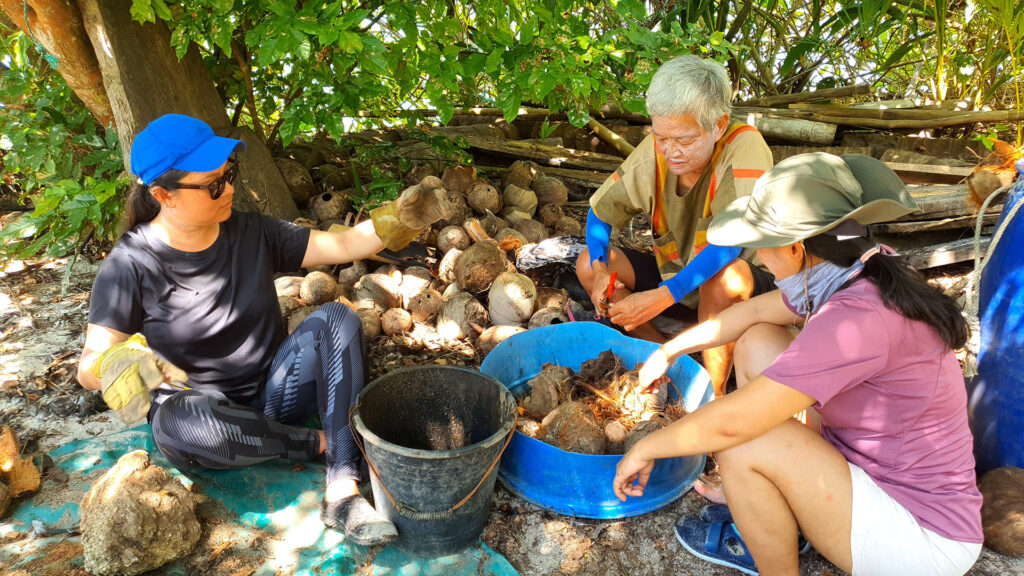
“One of my greatest takeaways from this experience was witnessing the dedicated efforts of these individuals and communities in their pursuit of sustainable living,” Tong Xinyao, a Year 1 Computer Science major, said. “Through small but meaningful steps, such as responsibly managing waste and reducing consumption, we can actively protect and preserve the environment.”
Partaking in an Urban Cultural Experience
After ten gruelling days at sea, the voyagers made their final landfall at Tarempa City, the vibrant, fast-growing capital of the Anambas Regency on Siantan Island, steeped in heritage and industry.
Going onshore at the crack of dawn, the buzz of trade and traffic carried on the morning breeze, they explored the bustling streets, negotiating the omnipresent motorcycles plying the roads and visiting the numerous provision shops, street hawkers, and other small businesses along the way.
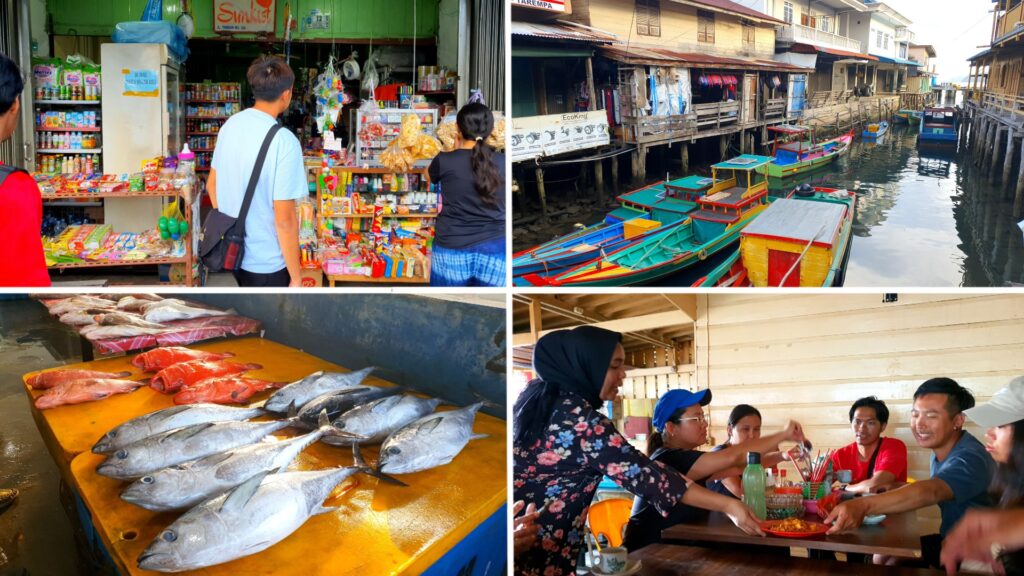
Immersing themselves in the sights, smells, and sounds of Tarempa City, they dug into hearty local dishes like Indonesian mie bakso and Indomie goreng at traditional eateries, and witnessed the local fishing economy in operation at a lively morning fish market selling seafood like squid, red snapper, grouper, and tuna.
The cultural experience also included a comprehensive tour of the newly built Masjid Agung Baitul Ma’mur mosque overlooking Tarempa Bay, a central facet of religious life for the Muslim demographic in Tarempa City.
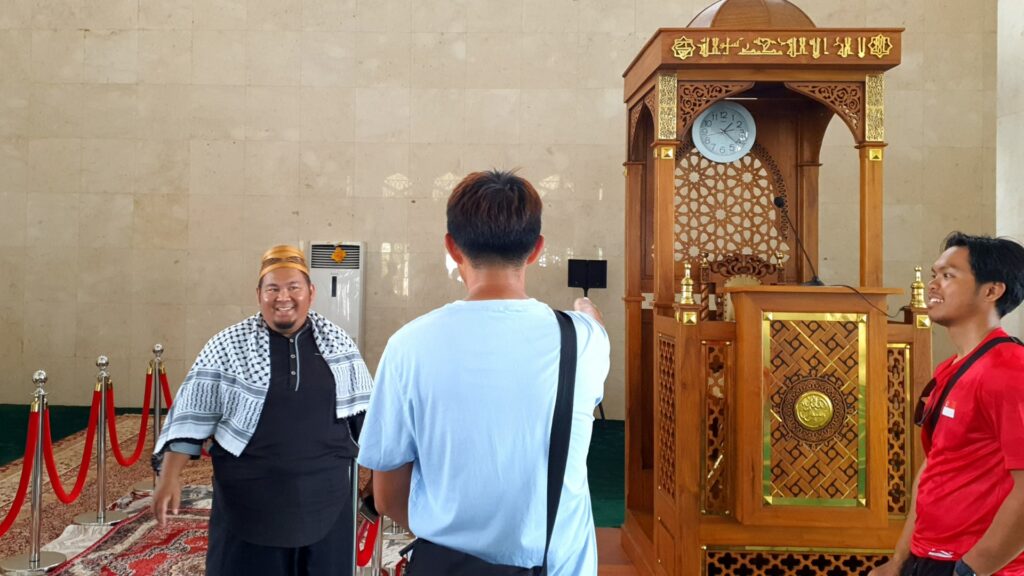
Besides elucidating its religious and cultural significance to the region, the imam delivered a sonorous rendition of the azan, the Islamic call to congregational prayer. The voyagers also learnt about the symbolism behind the mosque’s striking architectural features, such as the distinctive green dome and golden doors reminiscent of the Al Masjid an Nabawi in Medina, Saudi Arabia, one of the most important mosques in the Islamic tradition.
In good company: An enduring community of learners
For the crew, the journey itself, as well as the human connections made along the way, was as valuable as the various destinations. Living in the moment, the voyagers gained a profound sense of peace and mindfulness, getting in tune with their surroundings and each other.
“We didn’t use our phones as much and instead relied on our senses, and each other to live,” Ethan Leong, a Year 4 major in Psychology, said. “We woke to the dew of the morning and the morning sun at dawn. We slept to the waves and the moon rising over the horizon, and saw the stars move around the night sky. We slowed down enough to listen.”

“Away from the hustle and bustle of city life, we were presented with a rare opportunity to embrace an alternative way of existence,” Xinyao echoed.
The company also enhanced the entire experience—what started out as a ragtag band of strangers from all walks of life quickly coalesced into a tightknit community that cared for and brought out the best in one another, bound by a sense of rapport, camaraderie, and trust in each other.
“Our efforts in cultivating a safe and pleasant space to share our ideas were rewarded as everyone began to truly enjoy themselves, sharing opinions, helping others and creating memorable moments together,” Muhammad Harriz Adry Bin Ridzuan, a Year 4 major in Mechanical Engineering, reminisced.

Even more remarkable was the immense value that every individual brought to the table, enriching the whole. Possessing diverse skillsets, talents, and interests, each member of the crew quickly found a niche in which to contribute, from a Nursing student who volunteered as Chief Safety Officer and the 73-year-old artist-in-residence who gave the voyagers art lessons onboard, to an NUS sailor who taught the novices the ropes and a Southeast Asian Studies minor who took it upon himself to share fascinating nuggets of information about local Indonesian art, architecture, religion, and culture.
“Living on a sailing boat together for ten days fostered a greater understanding and cultural consciousness among us, with our diverse backgrounds in nationality, religion, academic pursuits and life stages bringing unique perspectives to our discussions,” Xinyao shared.
“Through daily interactions and shared challenges, we developed a deeper appreciation for one another’s backgrounds and beliefs, gaining insight into different cultures and learning to navigate cultural differences with respect and understanding. I am delighted that I had the opportunity to learn some Bahasa Melayu and about Southeast Asian cultures from my friends!” she added.

Reflecting on the rich experiences on the voyage that have broadened his worldview, as well as how he has grown both as an individual and as part of a community, Harriz said, “Even now, weeks after the trip, the crew has left a mark on me. Of all the experiences I have had in NUS, this was the one that left something indelible and made me feel so much more well-rounded and ready to approach anything out there in the world.”
The voyage may have come to a close, but for the intrepid voyagers, it is the sum of all these memories and experiences, unmoored from the trappings of a frenetic urban existence, that they will carry with them for a lifetime.
This second instalment of a two-part series on the NUS Seafarers “Understanding Anambas” STEER voyage and first appeared in NUSnews on 24 July 2023. Read more about the NUS Seafarers, or check out their YouTube channel!

